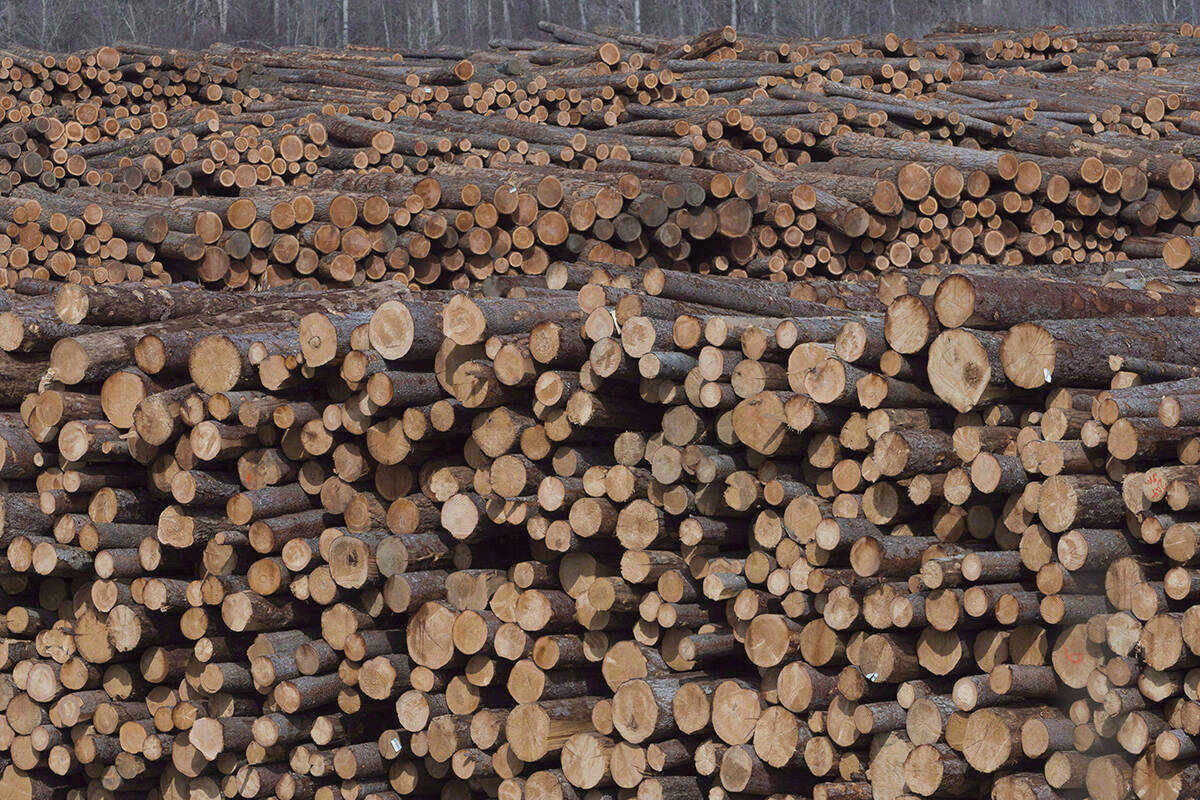The state of the provincial forestry industry and its future is this week’s focus for Premier David Eby and other key industry leaders.
Eby will be speaking Thursday (Jan. 19) to the Truck Loggers Association in Vancouver, just hours after addressing the BC Natural Resources Forum in Prince George.
There have been a number of concerning closures for the industry in B.C. in recent weeks: Canfor in Prince George announced a permanent closure impacting 300 jobs; Vaagen Fibre in Midway permanently closed earlier this month, impacting 65 employees; and other curtailments have led to temporary closures, such as in Castlegar this week.
Bob Brash, TLA’s executive director, told Black Press Media that the association is looking for specific measures to help reduce what he called the “fair bit of concern and uncertainty” in the industry.
During the week of Jan. 13, the price for 2x4s made out of spruce-pine-fir was US $370/1000 board feet, according to provincial figures. But the annual average for 2022 was US $814. Prices have dropped for several reasons, including less construction, and experts predict prices won’t recover amid higher interest rates and inflation.
Forest companies have also lamented declines in the annual allowable cut with the proviso that the actual amount harvested is generally less.
“Predictability on fibre supply is really critical,” said Linda Coady, president and executive director of the BC Council of Forest Industries.
While the annual allowable cut was around 80 million cubic-meters per year around 2007 to help harvest areas impacted by pine beetle, Coady expects that it will level out somewhere between 40 and 50 million cubic meters by 2030 – quite a swing.
“It was expected. But we do have to have a clearer picture on what is happening there and what the plans are.”
B.C.’s forest sector is deeply connected. Tree harvesting supports lumber and other wood products, while by-products from wood manufacturing and low-quality logs provide fiber for pulp and paper.
“That means if you get a shortage of fibre anywhere along this highly-connected value chain, you are going to have a domino effect across business activities, jobs and communities and that is what we are seeing right now in B.C,” Coady said.
While many facility closures being seen around the province are seasonal, others are permanent and the availability of fibre, or lack thereof, runs like a refrain through them.
“And investment is the key to the innovation and diversification that is required to respond to some of these broader shifts that are occurring in markets, products and across the board,” Coady said. “It’s not just the forest sector.”
RELATED: B.C. timber industry in throes of change, as premier warns of ‘exhausted forests’
Other related issues facing the industry include government’s deferral of nearly 1.7 million hectares of old growth forest as part of a new strategy to manage provincial forests in the face of climate change and reconciliation.
Some opposition believes government is not moving fast enough on these issues in favouring corporate interests. A local coalition protested Eby’s appearance in Prince George with demands for more local control.
B.C. Green MLA Adam Olsen said the system has run its course and it’s time for a change in timber values being the key factor in forestry decisions.
“What we need is a forestry industry and decisions being made based on eco-system health and well-being and we need to start (looking at) the long-term health and well-being,” he said. “That will take care of the forest industry for decades, not just weeks and months.”
The industry has historically always looked out for its bottom line while the government has promoted a boom-and-bust cycle through changes in allowable cut.
Olsen argued that more local control is necessary and questions calls for compensation over deferrals, as well as the creation of a fund to help industry make use of less valuable fibre.
Coady said industry is prepared to do its part, while working with the government.
“I think it is fair to say that there is a rural-urban divide in British Columbia around some of these issues that are important in the natural-resources sector context and more needs to be done to address that divide and that is where meetings like this one this week help.”

